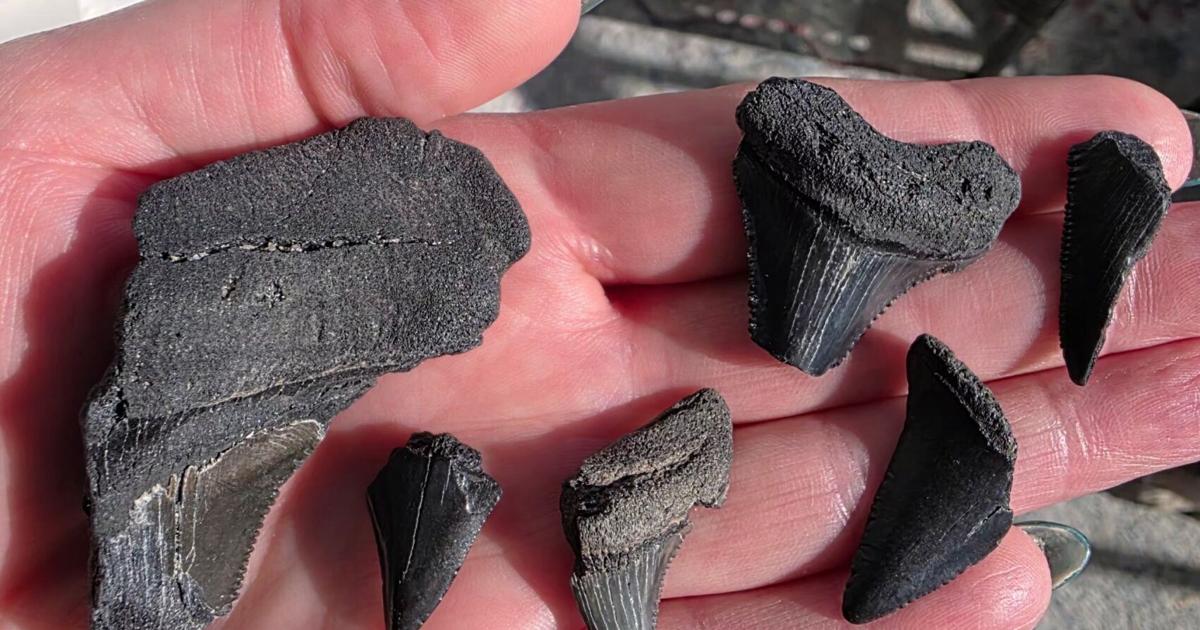“They were finding teeth from Day One until the end of the season,” Kotwica said of shark teeth seekers’ success the previous year.
Sometimes while standing in shallow water, “a tooth will wash up at your foot,” he said.
While the majority of teeth found on Lowcountry shores did come from the mouth of a shark, whether prehistoric or modern, there’s plenty more teeth to discover, said Chuck Gainey, owner of Island Cover Charters. Gainey has found the teeth of beavers, horses, whales, dolphins, megalodons and ancient ancestors of great whites while walking around islands.
“Shark teeth are the gateway drug,” Gainey tells his customers.
Beyond teeth, Gainey has found spear points, pottery sherds, and a gold English coin from 1766 known as a King George III guinea. He understands the appeal of finding such exotic objects, especially old teeth.
“Who doesn’t like walking around and picking up treasure, right?” said Gainey. “You’re touching something that’s never been touched by another human and that’s millions of years old.”
At the same time, Gainey warns about the potential of overharvesting Crab Bank and other islands. Even a plentiful supply of shark teeth has its limits, he said, and people don’t always follow rules that limit where they can go on an island and what they can do and take.
“It attracts the good, the bad and the ugly,” said Gainey, who suggested that permits be required to visit islands popular for collecting teeth, shells, and other goodies, and that there be limits imposed on how many visitors a charter boat can bring to an island each day.
“I would be a fan of regulation for the wildlife and the resource,” said Gainey, who regularly picks up litter left behind on remote islands. He has observed graffiti on tree trunks in some of these places and evidence of people camping in prohibited areas.
When Gainey takes customers on a boat ride to go beachcombing, he said he gently reminds people that many of the shells they pick up might otherwise be reused by crabs or other animals.
